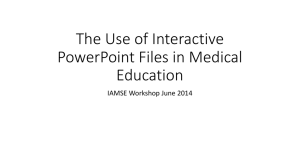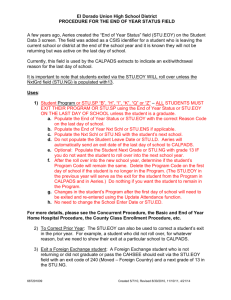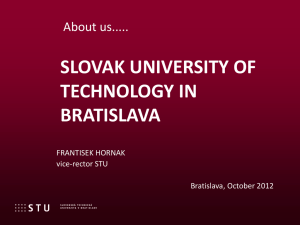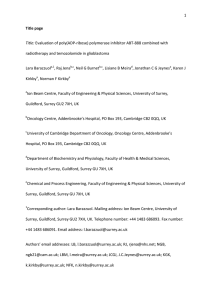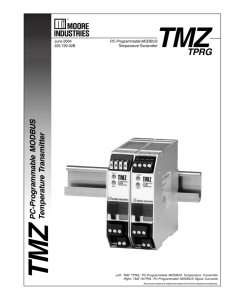Supplemental Figure Legends Figure S1. The expression of 5
advertisement
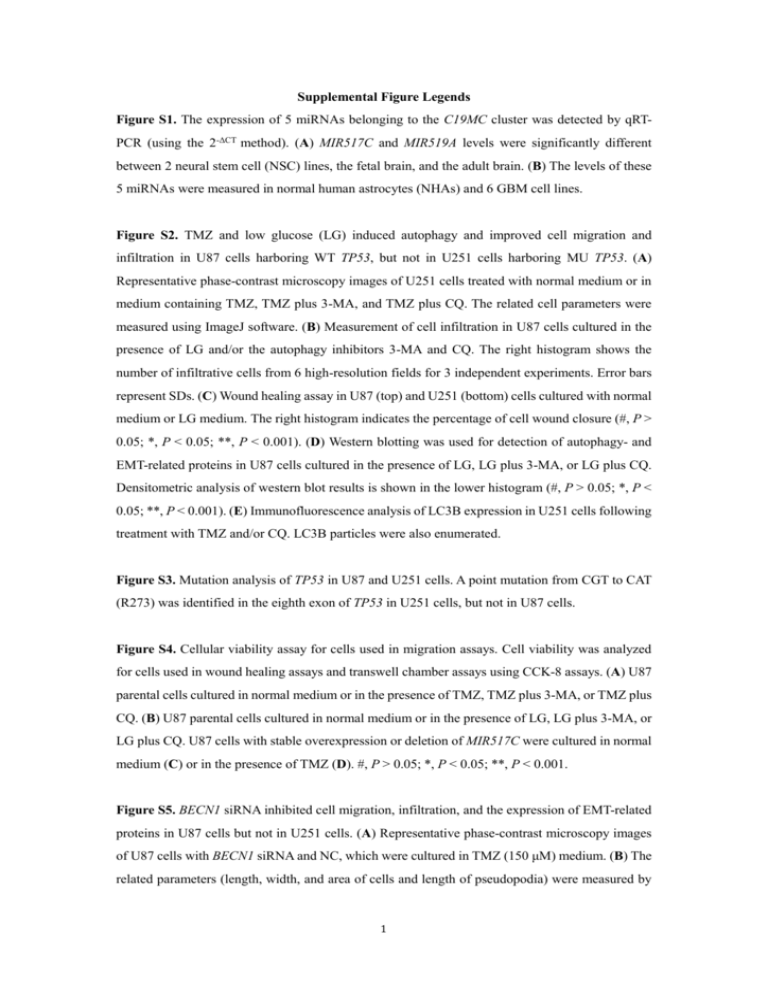
Supplemental Figure Legends Figure S1. The expression of 5 miRNAs belonging to the C19MC cluster was detected by qRTPCR (using the 2-ΔCT method). (A) MIR517C and MIR519A levels were significantly different between 2 neural stem cell (NSC) lines, the fetal brain, and the adult brain. (B) The levels of these 5 miRNAs were measured in normal human astrocytes (NHAs) and 6 GBM cell lines. Figure S2. TMZ and low glucose (LG) induced autophagy and improved cell migration and infiltration in U87 cells harboring WT TP53, but not in U251 cells harboring MU TP53. (A) Representative phase-contrast microscopy images of U251 cells treated with normal medium or in medium containing TMZ, TMZ plus 3-MA, and TMZ plus CQ. The related cell parameters were measured using ImageJ software. (B) Measurement of cell infiltration in U87 cells cultured in the presence of LG and/or the autophagy inhibitors 3-MA and CQ. The right histogram shows the number of infiltrative cells from 6 high-resolution fields for 3 independent experiments. Error bars represent SDs. (C) Wound healing assay in U87 (top) and U251 (bottom) cells cultured with normal medium or LG medium. The right histogram indicates the percentage of cell wound closure (#, P > 0.05; *, P < 0.05; **, P < 0.001). (D) Western blotting was used for detection of autophagy- and EMT-related proteins in U87 cells cultured in the presence of LG, LG plus 3-MA, or LG plus CQ. Densitometric analysis of western blot results is shown in the lower histogram (#, P > 0.05; *, P < 0.05; **, P < 0.001). (E) Immunofluorescence analysis of LC3B expression in U251 cells following treatment with TMZ and/or CQ. LC3B particles were also enumerated. Figure S3. Mutation analysis of TP53 in U87 and U251 cells. A point mutation from CGT to CAT (R273) was identified in the eighth exon of TP53 in U251 cells, but not in U87 cells. Figure S4. Cellular viability assay for cells used in migration assays. Cell viability was analyzed for cells used in wound healing assays and transwell chamber assays using CCK-8 assays. (A) U87 parental cells cultured in normal medium or in the presence of TMZ, TMZ plus 3-MA, or TMZ plus CQ. (B) U87 parental cells cultured in normal medium or in the presence of LG, LG plus 3-MA, or LG plus CQ. U87 cells with stable overexpression or deletion of MIR517C were cultured in normal medium (C) or in the presence of TMZ (D). #, P > 0.05; *, P < 0.05; **, P < 0.001. Figure S5. BECN1 siRNA inhibited cell migration, infiltration, and the expression of EMT-related proteins in U87 cells but not in U251 cells. (A) Representative phase-contrast microscopy images of U87 cells with BECN1 siRNA and NC, which were cultured in TMZ (150 μM) medium. (B) The related parameters (length, width, and area of cells and length of pseudopodia) were measured by 1 NIH ImageJ software. (C) The infiltrative ability of U87 cells transfected with BECN1 siRNA and NC was measured. (D) The histogram represents the cell count of infiltrative cells in 6 highresolution fields for 3 independent experiments. Error bars represent SDs (*, P < 0.05; **, P < 0.001). (E) Western blotting was used to detect the expression of autophagy- and EMT-related proteins in U87 and U251 cells transiently transfected with BECN1 siRNA in normal medium or in the presence of TMZ. (F) Densitometric analysis of the western blots (E) shown in the histogram (#, P > 0.05; *, P < 0.05; **, P < 0.001). Figure S6. Representative phase-contrast microscope images of MIR517C overexpression (oe), NC, and MIR517C knockdown (kn) U251 cells, which expressed GFP as a fluorescent marker (#, P > 0.05). Figure S7. MIR517C did not regulate cell proliferation, apoptosis, or cell cycle progression in U87 cells. (A) Cell proliferation ability of MIR517C (oe), NC, and MIR517C (kn) U87 cells was evaluated using Cell Counting Kit-8 assays. Experiments were performed in triplicate, and error bars represent SDs. (B) ANXA5-FITC staining and flow cytometry were used to measure apoptosis in MIR517C (oe), NC, and MIR517C (kn) U87 cells. (C) Western blot analysis of apoptosis-related proteins (CASP9, CASP3, and cleaved CASP3). (D) Densitometric analysis of the western blots in (C). #, P > 0.05. (E) PI staining and flow cytometry analysis indicated that MIR517C did not regulate the cell cycle in U87 cells. (F) Histogram showing the percentages of cells in different phases of the cell cycle. Samples were analyzed in triplicate, and error bars represent SDs. 2

